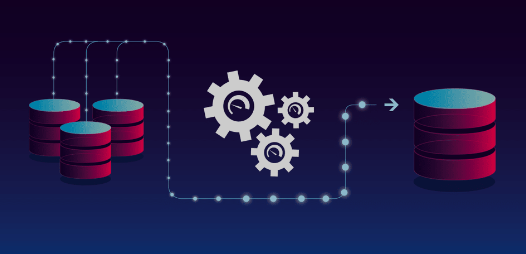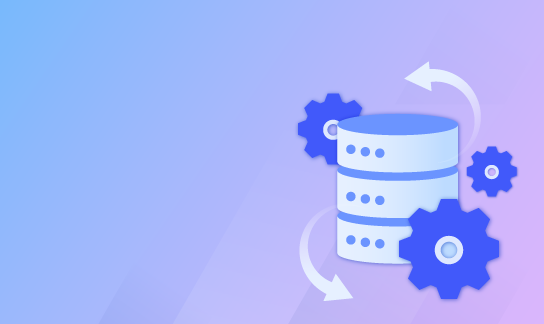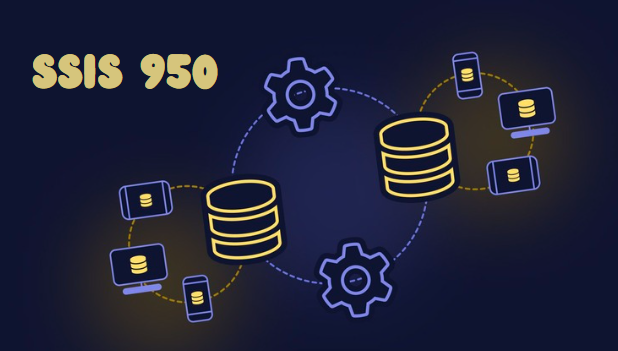SSIS 950: Comprehensive Guide to Data Integration
Introduction
In the modern age of big data, organizations need efficient ways to integrate data from various sources and ensure seamless data flow across platforms. This is where tools like SSIS 950 come into play. As a robust data integration tool, SSIS 950 (SQL Server Integration Services) simplifies the complex task of moving data between different sources and destinations, making it an essential tool for businesses aiming to streamline their data operations.
In this article, we’ll dive deep into the functionality, features, and best practices of SSIS 950. We will explore how this tool can transform data workflows, making them more efficient, scalable, and reliable. The target audience is professionals and businesses in the USA seeking a detailed understanding of SSIS 950 for optimizing their data management processes.
ALSO READ: WebtoonXYZ: A Comprehensive Guide to the World of Digital Comics
What is SSIS 950?

SSIS 950 stands for SQL Server Integration Services 950, which is the version of the SSIS tool associated with SQL Server 2019. SSIS is a powerful tool designed by Microsoft to help with data integration and transformation. It allows businesses to move data from various databases, files, and applications to a centralized location, enabling streamlined processing and analysis.
Unlike its predecessors, SSIS 950 offers enhanced capabilities, better performance, and more user-friendly interfaces. It integrates tightly with Microsoft’s suite of data products, including SQL Server, Azure, and other cloud solutions, making it ideal for organizations that are heavily invested in the Microsoft ecosystem.
Key Features of SSIS 950
- Data Extraction, Transformation, and Loading (ETL): SSIS 950 is primarily known for its ETL capabilities, allowing users to extract data from diverse sources, transform it based on business requirements, and load it into a destination database or data warehouse.
- Connectivity: The tool supports connections to numerous data sources, including SQL databases, Oracle, XML files, CSV files, Excel spreadsheets, and web services.
- Built-in transformations: SSIS 950 offers various data transformation tasks such as sorting, merging, cleaning, and aggregating data, which simplifies preparing data for analysis.
- Scalability: As businesses grow, so do their data requirements. SSIS 950 is built for scalability, ensuring it can handle increasing volumes of data without compromising performance.
- Integration with the Cloud: The tool seamlessly integrates with Azure Data Factory and other cloud-based services, enabling hybrid data management solutions that bridge on-premises and cloud environments.
Benefits of SSIS 950 for Data Integration
Organizations that deal with data from multiple sources often face challenges in ensuring consistency, accuracy, and accessibility. SSIS 950 addresses these challenges by offering a unified platform for data integration. Here’s how SSIS 950 benefits businesses:
1. Enhanced Productivity
With its drag-and-drop interface, SSIS 950 allows users to design data workflows without needing extensive coding knowledge. This simplifies the development process and accelerates time-to-market for data projects.
2. Support for Diverse Data Sources
The ability to connect to various data sources is a significant advantage of SSIS 950. Whether it’s relational databases, flat files, or web services, SSIS 950 supports seamless integration, ensuring that businesses can consolidate their data without any compatibility issues.
3. Data Transformation Flexibility
SSIS 950 provides built-in transformations to help businesses clean and prepare data for analysis. Tasks like filtering, sorting, merging, and validating data can all be performed within the SSIS environment, making the process more efficient.
4. Improved Performance with Parallelism
One of the standout features of SSIS 950 is its ability to execute tasks in parallel, which significantly improves performance. For large-scale data operations, this can mean faster processing times and quicker data availability.
5. Data Governance and Compliance
With increasing regulations surrounding data privacy and security, SSIS 950 provides businesses with the necessary tools to ensure compliance. Its built-in logging, error handling, and auditing features ensure that data processes are transparent and traceable, which is vital for governance.
ALSO READ: Spatula Whale: A Deep Dive Into an Extraordinary Marine Species
SSIS 950 and ETL Processes

The core of SSIS 950 lies in its ETL capabilities, where it excels in extracting data from multiple sources, transforming it to meet business needs, and loading it into a destination such as a data warehouse. Let’s explore how SSIS 950 manages each of these stages effectively.
Extraction
Data extraction is the first step in the ETL process. SSIS 950 supports a wide range of data extraction techniques, from simple data pulls to more complex queries involving multiple data sources. Whether you are extracting data from an SQL database or from flat files, SSIS 950 ensures data is extracted accurately and quickly.
Transformation
Once the data is extracted, it needs to be transformed into a format that can be analyzed. This is where SSIS 950 shines, as it allows users to perform a wide range of transformations. From filtering out unnecessary data to aggregating results for analysis, SSIS 950 offers a comprehensive toolkit for data manipulation.
Loading
The final stage of the ETL process is loading the transformed data into a destination, typically a data warehouse or an analytics platform. SSIS 950 offers high-speed, reliable data loading options that ensure your data is available for analysis as soon as possible.
Advanced Features of SSIS 950
While SSIS 950 offers all the standard ETL features, it also comes equipped with advanced functionalities that make it stand out from other data integration tools. Let’s explore some of these:
1. Data Quality Services Integration
SSIS 950 integrates seamlessly with SQL Server Data Quality Services (DQS), allowing businesses to maintain high data quality throughout their integration processes. Data can be profiled, cleansed, and matched before being loaded into a database, ensuring that only the most accurate and relevant data is used.
2. Master Data Services (MDS) Support
SSIS 950’s integration with Master Data Services helps businesses manage their master data efficiently. By connecting SSIS with MDS, organizations can ensure consistency across their key business entities, such as customers, products, and locations.
3. Error Handling and Debugging
SSIS 950 offers robust error handling capabilities, allowing users to capture and log errors during the ETL process. This ensures that any issues with the data are flagged early, preventing corrupt data from entering the final destination.
4. Custom Scripting with .NET and C#
For users looking to extend the functionality of SSIS 950, the tool supports custom scripting with .NET and C#. This allows for greater flexibility in transforming data and performing complex tasks that are not covered by the default SSIS components.
5. Cloud Integration
With organizations increasingly adopting cloud-based architectures, SSIS 950 provides out-of-the-box integration with Azure services, allowing for seamless data migration and transformation in hybrid environments.
ALSO READ: Mansrufer: Revolutionizing Men’s Grooming with Innovative Products
Best Practices for SSIS 950 Implementation

To fully leverage the capabilities of SSIS 950, businesses need to follow certain best practices during implementation. Here are some guidelines to ensure a successful SSIS 950 deployment:
1. Modular Design
Breaking down complex ETL processes into smaller, manageable packages ensures that the system remains maintainable and scalable. This modular approach also simplifies debugging and performance tuning.
2. Optimize Data Flow
Efficient data flow is critical to achieving high performance with SSIS 950. Avoid unnecessary data transformations or lookups, and always filter data as early as possible to minimize the amount of data being processed.
3. Parallel Execution
Take advantage of SSIS 950’s ability to execute tasks in parallel. By designing workflows that allow multiple tasks to run concurrently, you can significantly reduce the total processing time.
4. Error Handling and Logging
Incorporating error handling and logging mechanisms is essential for tracking issues in real-time. Set up event handlers to log errors and warnings, and ensure that all critical data flows have appropriate fail-safes in place.
5. Leverage Azure Data Factory for Cloud Projects
For cloud-based ETL processes, integrating SSIS 950 with Azure Data Factory can provide additional scalability and flexibility. This hybrid approach allows businesses to manage both on-premises and cloud data from a single interface.
Use Cases for SSIS 950

Given its versatility, SSIS 950 can be applied to a variety of data integration scenarios across different industries. Below are some common use cases:
1. Data Migration Projects
SSIS 950 is commonly used in data migration projects, where businesses need to move data from legacy systems to modern platforms. Its ability to connect with various data sources and destinations makes it an ideal choice for migration tasks.
2. Business Intelligence
Organizations that rely on business intelligence platforms like Power BI can use SSIS 950 to load clean, structured data into their analytics systems, ensuring accurate and timely insights.
3. Master Data Management
By integrating SSIS 950 with SQL Server Master Data Services, businesses can create and manage a single version of the truth for their critical business entities.
ALSO READ: LiteroticaTags: A Comprehensive Guide to Exploring Erotic Literature Online
FAQs About SSIS 950
1. What is the difference between SSIS 950 and previous versions?
SSIS 950 is specifically tied to SQL Server 2019 and offers enhanced cloud integration, better performance, and improved transformation tools compared to older versions.
2. Can SSIS 950 integrate with non-Microsoft databases?
Yes, SSIS 950 supports integration with a variety of databases, including Oracle, MySQL, and PostgreSQL, among others.
3. How does SSIS 950 handle data quality issues?
SSIS 950 integrates with Data Quality Services (DQS), allowing users to profile, cleanse, and match data before loading it into the destination.
4. Is SSIS 950 suitable for real-time data processing?
While SSIS 950 excels in batch processing, it can be used for near-real-time data processing when integrated with certain services like Azure Stream Analytics.
5. Can SSIS 950 be used for cloud data integration?
Yes, SSIS 950 provides out-of-the-box integration with Azure, making it a suitable option for hybrid and cloud-only data architectures.
Conclusion
In today’s data-driven world, efficient data integration is paramount for organizations to stay competitive. SSIS 950 offers a comprehensive solution for businesses looking to streamline their data operations, from simple ETL tasks to complex data transformations across hybrid cloud environments.
With its robust features, advanced integration options, and flexibility, SSIS 950 is a critical tool for businesses aiming to make the most of their data. Whether you are working on a data migration project, building a data warehouse, or looking to improve your business intelligence capabilities, SSIS 950 offers the tools you need to succeed.






